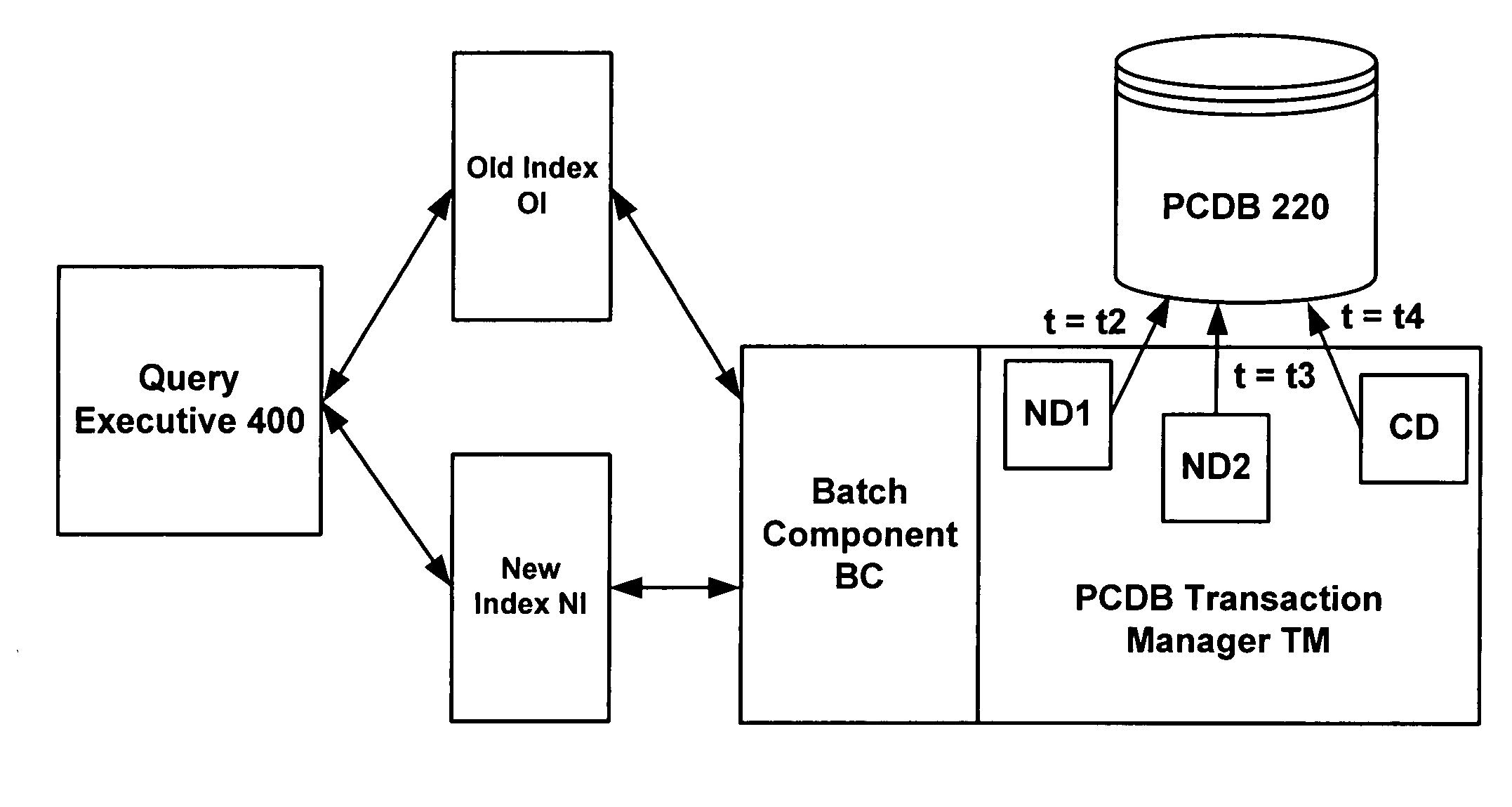Systems and methods for updating query results based on query deltas
a query delta and query system technology, applied in the field of system and method for continuously querying a data store, can solve problems such as too many branches to consider, overwhelming manageability overhead, and reaching crisis proportions
- Summary
- Abstract
- Description
- Claims
- Application Information
AI Technical Summary
Benefits of technology
Problems solved by technology
Method used
Image
Examples
Embodiment Construction
Overview
[0023] As mentioned, the invention provides a query engine enabling query-execution threads that operate to efficiently and continuously update search results yielded from a query on a mutable data store (e.g., displayed as a count or a summary view). As described below in greater detail, the mutability of the data store defines a delta problem of how to track possibly changing documents as they are added in and / or dropping out of query result sets. Accordingly, in various embodiments of the invention, the invention automatically updates a view or count associated with a query by performing the query on both an old state of the database and a new state of the database. Based upon an analysis of the differences in the result sets, referred to as deltas, a count or view associated with the query is updated.
[0024] In the state of the art, a query runner object would be given information about only the new state. To determine whether the change represents an addition, deletio...
PUM
 Login to View More
Login to View More Abstract
Description
Claims
Application Information
 Login to View More
Login to View More - R&D
- Intellectual Property
- Life Sciences
- Materials
- Tech Scout
- Unparalleled Data Quality
- Higher Quality Content
- 60% Fewer Hallucinations
Browse by: Latest US Patents, China's latest patents, Technical Efficacy Thesaurus, Application Domain, Technology Topic, Popular Technical Reports.
© 2025 PatSnap. All rights reserved.Legal|Privacy policy|Modern Slavery Act Transparency Statement|Sitemap|About US| Contact US: help@patsnap.com



